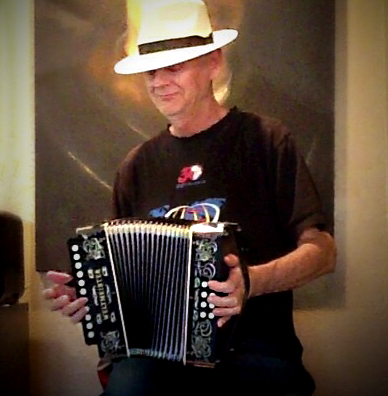
Accordion Failure Modes
by Paul F. Watson
I have bought many used accordions, & this experience leads me to the following conclusions:
- Accordions (& concertinas) do not ship well.
- Used accordions (& concertinas) have a limited number of likely failure modes.
- New accordions work better.
Knowledge of common failure modes is needed by those who repair & buy used instruments.
Shipping Risks: Most accordions & concertinas have reeds 'glued into the instrument' with a mixture of bee's wax & rosin. This works pretty well, but leaves the instrument vulnerable to reed detachment. This can occur if the instrument is left in a warm car, attic or in the blazing sun. It can occur during shipment at either cold or hot temperature extremes. A sudden "jolt" as may occur during shipment, may detach a reed. Other shipping risks exist. The buttons of the accordion left hand may drop into the instrument, leaving a nice round hole where the button should poke out. These risks can be minimised by skilled vendors & by ordering in spring or fall (not winter or summer) ;but, there is always risk when buying an instrument which must be shipped.
Failure Modes: The following is a list of common failure modes & their effects: The following list will help a prospective buyer examine an instrument before purchase.
- Buttons can stick on the right hand keyboard of button box accordions or concertinas. There are a variety of causes. Try playing the instrument to find this kind of problem. IF you are not skilled, simply compress the bellows & move through all the buttons -- one by one. They should rebound without sticking & continuing to sound. The same problem occurs with the chord buttons of the left hand on accordions.
- For piano keyed instruments, a piano key can be raised or too low. It is best to avoid such an instrument as the repair requires removal of the pin that retains the entire set of keys & adjustment of the offending key.
- A hard jolt can drop a left hand accordion button inside the instrument. When examining the accordion, the button will not be visible - only a small round hole where it used to be! This is usually not difficult to fix, if your are mechanically minded, but pulling the loose button back into place is 'nerve racking' as you will be wondering whether the linkage will bend before it drops into place. A small hook shaped wire is a suitable tool, after opening up the back of the accordion.
- For full accordions, the base buttons sometimes drop part way into the hole. From this position, they do not sound the chords. This problem usually follows a sharp jolt, and the button linkage flexes allowing a projection to slide past the "cam" it is supposed to engage. If you have steel nerves, many of these problems are easily remedied, but if the problem is on the inboard row of buttons, it is difficult to access sufficiently to fix the problem.
- Accordion reeds are normally glued in place with bees wax which can melt or become brittle. Old accordions sometimes have reeds 'floating around inside'. You can find this kind of problem by rotating the instrument in your hands and listening for a rattle inside. Do not to play a "rattle" instrument as the reeds are liable to fall into the bellows area & get bent as the bellows compresses. Another symptom is that when the offending button is pressed, air "gushes" through the accordion without any sound. Avoid this method of diagnosis as it is the best way to bend reeds!
- Very old accordions go out of tune, but can be retuned by trained professionals. I have never tried to tune an accordion & my reading suggests it is best left to the pros.
- The accordion bellows is made of cardboard & tends to rub on the musician's belly. The bellows edges must be protected by decorative strips which are glued in place with LePages glue (or equivalent). This repair is not difficult & can be achieved without disassembling the instrument. Simply obtain repair material (search on line), cut to length & carefully put in place while the instrument is partially 'open'. Wait for the glue to dry & your accordion should be ready to play.
- The bellows can have holes or tears & particularly at bellows corners. Small leaks can sometimes be fixed with a bit of tape applied inside. Replacement bellows are expensive & it is best to avoid an instrument with serious bellows problems.
- Older accordions sometimes leak air past the valves that are slaved to buttons or keys. When you activate the bellows with medium force, one or more reeds will sound even when no keys or buttons are pressed. When this occurs on the base section of accordions, it is often difficult to access and fix.
- Decorative plastic coverings on the wooden instrument body often come off with age, leaving the instrument unattractive. This can be repaired provided matching material can be found. Many accordion 'skin materials' are difficult to glue in place as they are slick.
The above list is not comprehensive but identifies the more common problems. Caution is advised when buying a used instrument; however, I have handled many accordions of advanced age that still played well & were not greatly out of tune.
Dionysus.biz Home Page